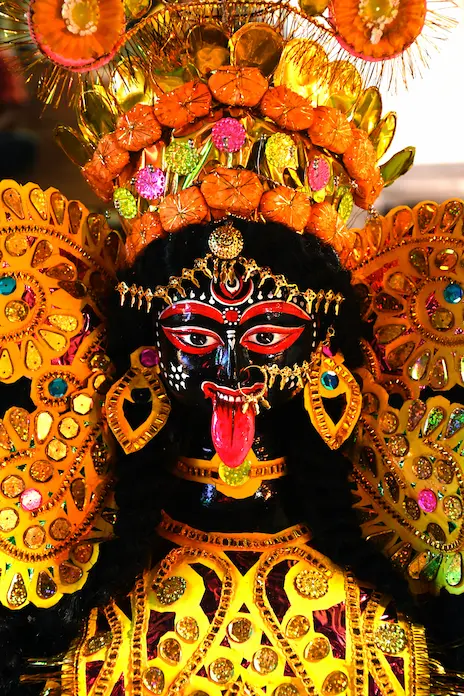What better way to start a series of the life works of Alan Watts than to start with perhaps the most fundamental questions of human existence. What, and who is this entity we call God?
Now I’m sure that most of you know the old story about the astronaut who went far out into space and was asked on his return whether he had been to heaven and seen God and he said yes. And so they said to him, “Well, what about God?” And he said “She is black.”
1.3.1 – Images of God
This is a classic example of Watt’s brilliant way of making light of the heaviest of subjects. The story critiques the common Abrahamic traditions of the patriarchal, biblical God. This God is not the institutionalised male God of synagogues and churches, instead it’s something entirely different.
God is Dead
“Gott ist tot” or “God is dead” is a widely quoted statement by German philosopher Friedrich Nietzsche. To Nietzsche, the Enlightenment had eliminated the possibility of the existence of God. Perhaps it would have been more precise to denounce God as “dying”, and its death has undoubtedly accelerated in Western democracies with levels of atheism higher than ever, and ever fewer people attending religious ceremonies. This should come as no surprise, our “free-thinking” republics leave little room for repressive, demanding, and monarchical Gods.

The image of god is closely bound to what we think god is; “White beardy man in the sky” tells us a great about what we think of God. He is God the father, who will judge you upon death and sentence you accordingly – you will either get painful hell or painfully boring heaven. Obey him.
What strikes me most about this idea of God is just how one-dimensional it is. Reality is far more chaotic and amoral. A lion eats a gazelle, is the lion evil? Is the lion going to hell for murdering a poor innocent impala?
It’s Turtles All the Way Down
Reality is dark and scary, there are no rules and there isn’t even a game being played. How can we move forwards in the face of this horrible mystery? Simple, we create a benevolent father figure to watch over us, to give us something to hold on to as we free-fall into the abyss.
We are sandwiches between infinities, up we have the infinite universe, down we have atoms that break into quarks that will then break into further parts. Humanity’s tools are getting so advanced that our studies of the fabric of physics are leading to bizarre conclusions.
The heroes are those that show courage in face of the void, whose quest for truth means rebelling against the mantle of the father. Truth requires that we see things without duality. For one to really see the light, one must see darkness.
You cannot appreciate the convex without the concave. You cannot appreciate the firm without the yielding.
Alan Watts – 1.3.1 Images of God
The quest for truth is aided by seeing God in the opposite, for that is required for the whole picture to be made. A painting cannot be without a canvas – believing otherwise is illusory. Here Watt’s advice reminds me of how Zen Buddhists utilise Koans to get our minds out of their normal ruts. God is a black woman as much as a bearded man in the sky my friend.
Non-Duality & Non-Being
Central to Watt’s thinking is the idea of non-duality, and he brings this subject to life beautifully in this talk. God is neither a woman, nor man, not white, and not black. It is really in the land of ungraspable – in the gap between knowing and not-knowing.
It can be understood but grasped, perhaps felt but only for the briefest of moments. IT cannot be grasped, no matter how badly we wish it was possible to. That is the dark truth, but thus, also light. That space in the middle IS GOD. Inhabit that space.
This is not atheism in the formal sense, it’s a profoundly religious attitude. The something we cannot conceive, What Nagarjuna called ‘shunyata‘. This attitude in practice corresponds with an attitude of total trust. Of letting go.
When we form images of God. They’re all really exhibitions of our lack of faith. Something to hold on to, something to grasp. How firm a foundation, what lies underneath us, the Rock of Ages or whatever. Ein feste Burg.
Alan Watts – 1.3.1 Images of God
Alan Watts concludes this better than I ever could:
But when we don’t grasp we have the attitude to face. If you let go of all the idols you will of course discover that what this unknown is which is the foundation of the universe is precisely you. It’s not the you you think you are. Now it’s not your opinion of yourself, it’s not your idea or image of yourself, it’s not the chronic sense of muscular strain which we usually call I. You can’t grasp it of course not. Why would you need to suppose you could what would you do with it. And who would do what with it. You could never get it it is others that profound central mystery and the attitude of faith is to stop chasing it. Stop grabbing it, because if that happens the most amazing things follow. But all these ideas of the spiritual, the godly, as this attitude of must. And we have been laid down the laws which we are bound to follow, all this jazz, is not the only way of being religious and of relating to the ineffable mystery that underlies ourselves in the world.
Alan Watts – 1.3.1 Images of God
